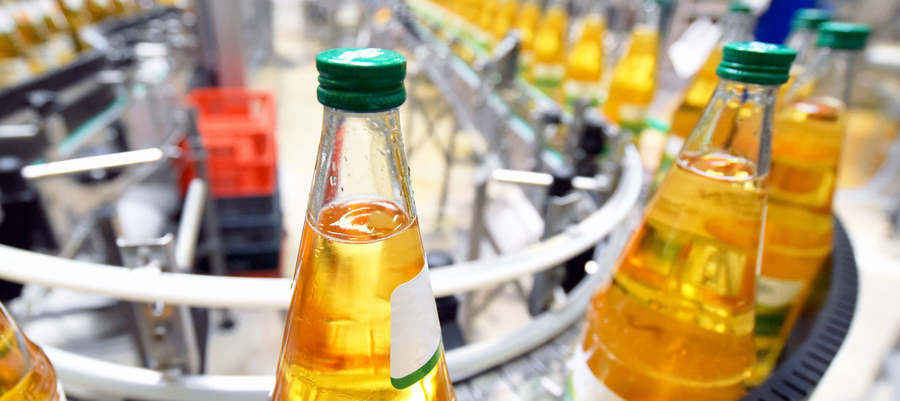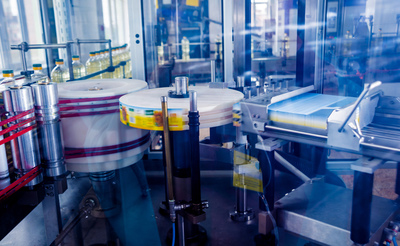The packaging industry is pivotal to the smooth functioning of our society. Almost every commercial product that exists requires packaging, and all commercial packaging must be achieved efficiently, uniformly and rapidly. The task of doing it would be unthinkable without an almost immeasurably diverse array of machinery; and the performance levels of these machines are directly dependent on precise motion control.
Packaging machines
The range of jobs carried out by packaging machinery extends the length of the factory floor - and beyond. Cans, packets and bottles (and all other materials referred to in the industry as primary packaging) must be made, filled, sealed and labelled before being batched in consolidated units for distribution (secondary packaging) - which batches are then secured for transportation using the kind of crates, film wrap and pallets known as tertiary packaging.
It’s easy to see why - for safety, for hygiene, for speed and for accuracy - almost all of these operations should be done by machines.
Think of the hundreds of jars or bottles that in a single minute can be steered by one conveyor under banks of liquid product-dispensing pistons before going on to be securely capped and shunted on for labelling.
VFFS machines
Or consider the vertical fill form sealing machine (VFFS). This ingenious device manufactures an ongoing stream of heat-sealed plastic (or paper or foil) bags - each filled with product after the creation of seals to back and bottom but before the final top seal / cut is executed - out of a single roll of printed feedstock.
Though much of this machinery has venerable history (the first VFFS machine was patented back in the 1930s), it is essential, these days, that their functioning be the result of specifically programmed, servo-driven motion profiles (if the desired sequence is straightforward enough a general-purpose variable frequency drive may suffice).
Within these motion profiles speed variation is often critical. Achieving consistency of packet length in VFFS machines, for example, requires good tension in the material feed. This can be achieved by having the pull belts move quickly and forcefully for the first phase of the feed, before gently ramping down until the necessary bag length is completed precisely (all within a fraction of a second per packet).
But precision relates to much more than just quality of work.
Drives and intelligent motion control systems are valued, among other things, for their association with energy savings and prolonged machine life. No less important to the packaging industry is the extent to which high-precision machine performance cuts levels of waste material - and, therefore, of that waste’s environmental impact.
This point will remain particularly important for as long as plastics continue to be widely used across the sector.
Reducing waste
It’s not just a question of being able to programme machines to use optimum quantities of material. That material is itself, in some instances, becoming trickier to handle as it is reformulated to be more sustainable. Recycled film wrap, for example, is thinner and more fragile than non-recycled and so more prone to crease or rip under imperfect tensioning. Such an evolution places a new accuracy burden on the synchronised rollers and feeding devices that manipulate the film.
But this challenge - alongside that of accommodating the reduced heat tolerance of thinner films when subjected to the sealing process - is being successfully met by a new generation of packaging machines. The right combination of drives, control algorithms and sensor technology can work with film wrap (recycled or not) less than a quarter of the thickness of older films - promising a potential reduction of 75% in the quantity of industrial film used.
All packaging waste can be reduced through a scaling down of original quantities - a commonsense enough proposition, but not necessarily straightforward to execute.
For example, desirable though it may be not to pack a product into an oversized box - not just because of the wasted cardboard but because of the subsequent need for paper, foam or plastic void fill - the conventions of the old-style production line have tended naturally towards the one-size-fits-all concept.
These conventions stand increasingly at odds with current trends towards product diversification - considered these days a basic strategy towards brand growth and development.
Two solutions to the boxing problem are now establishing themselves in the industry. The first is to create custom-sized boxes on demand; the second to fill boxes more efficiently. Both solutions take the form of intelligent packaging machines constructed around series of axes, variable speed motors and servo drives.
Cartoning machines
An example from the former category would include a cartoning machine that wraps products of disparate dimensions, fed through by conveyor, in appropriately sized sections of pliable cardboard from a continuous supply, before sealing and labelling the finished cartons. A smart box-filling machine uses pick and place technology to position products in preassembled cartons in a way that minimises wasted space.
Indeed, the same pick and place intelligence is penetrating the relatively heavyweight world of palletizing where traditional air and hydraulic systems are ceding place to servo-driven motion control.
Automated palletizers have been around since the 1940s but a machine built to stack a single product in a single pattern could require months of mechanical redesign if it had to change its line of work. Recent advances in automation technology - notably the integration of robotic functions into motion and logic controllers - have delivered a new generation of truly agile palletizing robots accessible to anyone with traditional PLC experience.
Speed, accuracy, even efficiency are no longer the whole story. If variation and diversity are key characteristics of the modern consumer experience, then responsiveness and flexibility are scarcely less imperative to the machinery that packages it for market.



